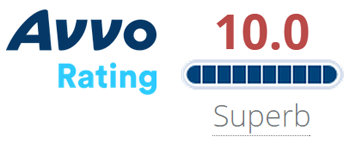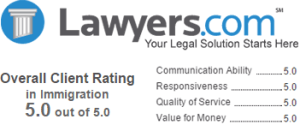Shusterman’s Immigration Update June 2017
Volume Twenty Two, Number Six
SHUSTERMAN’S  IMMIGRATION UPDATE is the Web’s most popular e-mail newsletter regarding US immigration laws and procedures with over 40,000 subscribers located in more than 150 countries. It is written by a former INS Trial Attorney (1976-82) with over 40 years of experience practicing immigration law.
IMMIGRATION UPDATE is the Web’s most popular e-mail newsletter regarding US immigration laws and procedures with over 40,000 subscribers located in more than 150 countries. It is written by a former INS Trial Attorney (1976-82) with over 40 years of experience practicing immigration law.
Published by the Law Offices of Carl Shusterman, 600 Wilshire Blvd, Suite 1550, Los Angeles, California, 90017. Phone: (213) 623-4592 x0.
Want to keep up to date with the latest changes in immigration laws, procedures, processing times and forms? Subscribe now to our Immigration Newsletter, join the conversation on our Facebook Page, follow our Blog Posts and subscribe to our “How-To” Immigration Videos.
Client Reviews

Great Work!
“We are very pleased by the services we get from the Law Offices of Carl Shusterman. Our experience in the past year with all our H1B renewals has been amazing, and we’ve obtained great results.”
- KRG Technologies, Valencia, California
Read More Reviews
Zoom Consultations Available!
Shusterman’s Immigration Update June 2017
TABLE OF CONTENTS:
1. Should Local Police Enforce Federal Immigration Laws?
2. Ask Mr. Shusterman: Trump Needs Realistic Immigration Policies
3. State Department Visa Bulletin for June 2017
4. Immigration Government Processing Times
5. Success Story: Turning Around a Green Card Denial (Part 2)
6. EB-5 Investor Visas – Frequently Asked Questions
7. Immigration Trivia Quiz: Famous Comedians
8. Shusterman’s Upcoming Immigration Seminars
9. Jobs & Green Cards for RNs & MedTechs: Free Legal Help!
10. No Winner for Our May 2017 Immigration Trivia Quiz
NEWS FLASHES:
- Private Bills – On May 5, Thomas D. Homan, the Acting Director of ICE wrote a letter to Senator Charles Grassley, Chairman of the Senate Judiciary Committee, announcing changes in ICE policy which make it more difficult for persons who have private bills introduced on their behalf by Members of Congress to obtain stays of removal.
- EOIR Statistics Yearbook – The Executive Office for Immigration Review (EOIR) has released its statistics yearbook for fiscal year 2016. The number of cases before the Immigration Courts and the Board of Immigration Appeals greatly increased during the past year.
- Texas Enacts Anti-Sanctuary Cities Law – On May 7, Governor Greg Abbott of Texas signed a bill targeting sanctuary cities. Among its major provisions, the bill outlaws the establishment of sanctuary cities , requires local law enforcement officials to cooperate with federal immigration authorities by holding undocumented immigrants subject to deportation, and permits local law enforcement officials to question individuals regarding their immigration status in the United States.
- Trump’s Choice for USCIS Director Attacked Obama Programs – Lee Francis Cissna, President Trump’s nominee to head the federal agency that handles applications for visas, refugee status and citizenship, has put little on the public record in his 20 years as a lawyer, government employee, diplomat and Capitol Hill aide. However, while working for Senator Charles Grassley (R-IO), he drafted dozens of letters under the senator’s name to DHS officials, helping Grassley to intensify his oversight of immigration and creating a blueprint for dismantling President Obama’s initiatives.
- DHS Grants Short TPS Extension for Haitians – On May 22, DHS Secretary John F. Kelly today announced his decision to extend, for an additional 6 months, the Temporary Protected Status (TPS) designation for Haiti. This extension is effective July 23, 2017 through January 22, 2018.
- ICE ERO Arrests Climb Nearly 40% – In the 100 days since President Donald Trump signed Executive Orders regarding immigration enforcement priorities, ICE has arrested more than 41,000 individuals who are either known or suspected of being in the country illegally. This reflects an increase of 37.6% over the same period in 2016.
- DHS Releases Fiscal Year 2016 Entry/Exit Overstay Report – On May 22, DHS released the FY 2016 Entry/Exit Overstay Report. The report provides data on departures and overstays, by country, for foreign visitors to the United States who entered as nonimmigrant visitors through an air or sea Port of Entry (POE) and were expected to depart in FY16.
- MAVNI: DOD Rule Change Stalls Path to Citizenship – A rule that bars MAVNI recruits from receiving security clearances until they complete their first term of service has crippled the ability of soldiers to earn a commission and prevents the military from using their talent for years.
1. Should Local Police Enforce Federal Immigration Laws?
On May 26, the House Judiciary Committee approved the David-Oliver Act (formerly the “SAFE Act”) on a strict party line vote.
The Act would criminalize all undocumented persons and compel local police departments to enforce federal immigration laws.
Sounds like a good idea?
Consider this: We all depend on our local police departments to keep us safe and protect our families from criminals and dangerous people. If someone pulls out a gun, breaks into a house, assaults someone or drives under the influence of drugs or alcohol, we want the police to arrest him.
But police can’t be everywhere, all the time. They need the cooperation of folks in the community to report a crime and, in some cases, to testify against the perpetrators. Trust is an all-important requirement in keeping our communities safe.
We need to make sure that if someone commits a serious crime, he is arrested, tried, and if found guilty, serves his sentence. If he is not a US citizen, the US Immigration and Customs Enforcement (ICE) agency can place a hold on him. Upon completing his jail term, he will be transferred from criminal to immigration custody.
The bill wants local police to be able to arrest folks simply because they are undocumented, whether or not they are a danger to their communities. This is the wrong thing to do for a number of reasons.
First, how would police know whether a person is undocumented? As a former INS prosecutor, I know that federal immigration laws and regulations are extremely complicated. A person may be a green card holder, a temporary nonimmigrant, an asylum applicant, have TPS, have an application for an extension of stay or a change of status pending, etc. Trying to determine the immigration status of a person would be an impossible task for most local police officers and would waste countless hours of their time. Would we rather have police officers spend their time questioning people about their immigration status, or going after dangerous criminals?
“I find that very worrisome,” said Stephen Legomsky, an immigration law professor at Washington University in St. Louis. “State and local police are very rarely trained in the intricacies of immigration law. It’s incredibly complicated, and my guess is that they’ll be making lots of arrests of people based on factors that are inappropriate. It will probably lead to more racial profiling.”
Second, burdening local police departments with making determinations about a person’s immigration status would destroy the relationship of the police with the people they serve and protect. If a person is afraid that a police officer will question him about his immigration status because of his skin color, his accent or his nationality, he will be less likely to report crimes to the police.
For instance, since the beginning of the year, police chiefs in Los Angeles and Houston have said that members of the Hispanic community are reporting fewer rapes. This is not because the number of rapes are decreasing. It is because Hispanics are more and more afraid of reporting crimes in this deteriorating political atmosphere.
Let’s make things better, not worse.
2. Ask Mr. Shusterman: Trump Needs Realistic Immigration Policies
 When Donald Trump ran for President, he pledged to make a number of controversial changes to our country’s immigration system. He stated that he would deport 11 million illegals, end the DACA program, build a wall along our southern border and have Mexico pay for it, defund sanctuary cities and temporarily ban all Muslims from entering the US.
When Donald Trump ran for President, he pledged to make a number of controversial changes to our country’s immigration system. He stated that he would deport 11 million illegals, end the DACA program, build a wall along our southern border and have Mexico pay for it, defund sanctuary cities and temporarily ban all Muslims from entering the US.
Several months into his Presidency, he has made little if any progress in carrying out these pledges.
Arrests of undocumented persons are up almost 40%, but even at this rate, it would take centuries for him to fulfill his campaign pledge. In fact, since most undocumented persons have lived in the US for over a decade and many have relatives who are US citizens and green card holders, they will be able to apply for cancellation of removal before Immigration Judges and secure work permits. Thank you President Trump!
The DACA program remains in place, and the President seems to have changed his position on abolishing it. However, many DACA recipients live in fear that they may be deported.
The current budget which the President has signed into law provides not a penny toward building a wall along our southern border. And Mexico has made it clear that they are opposed to a wall, and will not be financing it.
Likewise, the budget places no penalties on sanctuary cities and provides funds to hire only 100 additional enforcement agents and 10 Immigration Judges. A tiny drop in the bucket when one considers that the President had promised to hire another 15,000 ICE and CBP officers.
Trump’s Muslim travel ban was struck down by Federal Judges across the country, and eventually by the US Court of the Appeals for the 9th Circuit. And rather than appeal this ruling to the Supreme Court, the Trump Administration backed down and issued a new revised travel ban stripped of all offensive language.
However, the revised ban suffered the same fate as the original ban, and was eventually struck down by the US Court of Appeals for the 4th Circuit. Now, Attorney General Sessions has pledged to appeal this ruling to the Supreme Court.
Both the H-1B and the EB-5 programs have continued as is, although there is considerable support in Congress to revise both programs. The President has assured farmers that he does not intend to deport their work forces, even though nearly all these workers are undocumented.
One can only hope that Trump will begin to realize that as President of the United States, he needs to work with members of both parties in Congress to craft an immigration policy that is good for our country, not one which demonizes particular nationalities and religions.
3. State Department Visa Bulletin for June 2017
EMPLOYMENT CATEGORIES
The worldwide employment-based preference categories all remain current except for EB-3 which advances by 1 month to April 15, 2017.
However, the outlook remains bleak for persons born in India, China and the Philippines due to per-country quotas.
India EB-1 retrogresses over 5 years to January 1, 2012 meaning that no visas in this category will be available until October 1, 2017. India EB-2 advances by 3 weeks while EB-3 moves ahead by 7 weeks.
China EB-1 retrogresses over 5 years to January 1, 2012. EB-2 advances by 3 weeks while China EB-3 for professionals and skilled workers remains frozen. However, China EB-3 for unskilled workers jumps forward by over 4 months. China EB-5 inches ahead by 1 week.
Philippines EB-3 moves forward by 4 months to May 1, 2013.
The EB-4 category for persons born in Mexico, El Salvador, Guatemala and Honduras remains frozen.
Below are the State Department’s Charlie Oppenheim’s predictions for the movement of EB priority dates for the remainder of the fiscal year:
Increased demand across the employment based preferences, including EB-4 and EB-5, has significantly decreased the “otherwise unused numbers” which have traditionally trickled up to EB-1 and potentially down to EB-2. For example, in FY 2016, Special Immigrant Juvenile cases used more than 50% of the entire EB-4 annual limit, thus preventing many of those 5,200 numbers to potentially become available for use by EB-1 applicants. This, together with high EB-1 Worldwide demand, has contributed to a situation where EB-1 India and EB-1 China now have a final action cut-off date, and in which EB-2 China and EB-2 India number usage is restricted to their annual limits. This is creating significant pressure on these categories that is not likely to abate in the foreseeable future.
In 2014, EB-2 India used approximately 23,500 numbers due to the slightly higher employment annual limit and the infusion of otherwise unused numbers from other categories. By contrast, EB-2 India number use will be subject to its annual limit of 2,803 numbers in FY 2017. As demand across employment based preference categories continues to grow, and absent reform, members can expect to see continued pressure on China and India in the EB-1 and EB-2 categories.
EB-1 China and EB-1 India. As predicted, a final action date of January 1, 2012 is being imposed for EB-1 China and EB-1 India which have already used almost half of the entire EB-1 Worldwide limit for this fiscal year. This date is expected to hold through the remainder of this fiscal year. It is hoped that the final action date for EB-1 China and EB-1 India will return to current on October 1, as it did last year, but Charlie will continue to monitor demand in these categories over the summer months. EB-1 Worldwide is expected to remain current through this fiscal year and into the next.
EB-2 Worldwide. For several months, Charlie has observed high EB-2 number usage, and is now certain that a final action cut-off date will be imposed for EB-2 Worldwide by August, and possibly in July. Charlie hopes that the date imposed will not be too drastic, and will determine that date based upon the remaining numbers and the monthly demand trend. In the worst case scenario, the date will remain the same through the end of the fiscal year but depending on demand, it is possible that the date could advance slightly in September. Charlie is confident that this period of retrogression will be brief, and that the category will again become current on October 1.
EB-2 India. Demand for EB-2 India continues to be strong, in large part due to EB-3 upgrades. As noted above, the supply of visas in this category is limited to the per country limit. Although EB-2 India will advance slightly in June, Charlie no longer believes this category will recover to last year’s final action date. Charlie hopes to hold the existing final action date through the remainder of the fiscal year but will be watching this category closely.
EB-2 China and EB-3 China. EB-2 China will advance less than one month to March 1, 2013 in June, and EB-3 China’s final action date of October 1, 2014 continues to hold steady in June. Charlie expects EB-2 China to continue to advance slowly and notes that it is on track to hit the per country limit. In addition, EB-3 downgrade volume has started to materialize in large numbers. Charlie hopes to hold the EB-3 China final action date as long as possible, but retrogression of this category cannot be ruled out. Since Charlie lacks visibility into downgrade demand until a visa number is requested, members should continue to watch this category closely.
EB-3 Worldwide. EB-3 Worldwide will advance by one month to April 15, 2017 in June, making this category effectively current. Charlie expects this category to continue to advance.
EB-3 India. In June, EB-3 India will leap forward from March 25, 2005 to May 15, 2005. Since EB-3 Worldwide and Mexico demand is low, those otherwise unused numbers will continue to advance the final action date for EB-3 India in July and August. Charlie has already predicted that the July final action date for EB-3 India will advance to October 15, 2005.
EB-5 China. EB-5 China will advance by one week to June 8, 2014 in June. Charlie expects slow forward movement in this category.
FB-4. As noted last month, FB-4 Worldwide is the family-based preference category that members should watch closely. Although the final action date will remain the same in June, Charlie hopes to advance this category this fiscal year.
FB-4 Worldwide continues to advance, as the majority of beneficiaries are not responding to the NVC “Agent of Choice” letters. Only 40% of 120,000 FB-4 Worldwide beneficiaries who had been sent “Agent of Choice” letters no later than April 2016 have responded to those letters, and of those, only 15% provided sufficient information for an interview to be scheduled. Had they responded in a timely manner, all of those applicants could have been scheduled for interview no later than April 2017. Charlie reminds members that timely response to the Agent of Choice letters is helpful to ensuring that case advances to completion as quickly as possible.
Special Immigrants. EB-4 India will be subject to a final action date in July. That date will track the final action date for El Salvador, Guatemala, Honduras and Mexico. At last week’s FBA conference in Denver, Charlie announced that the July EB-4 date for those five countries will be August 15, 2015.
The Visa Bulletin notes that the SQ category for certain Afghanis will remain current, following approval of an additional 2,500 visas. The SQ category for Iraqis remains current, however, the application filing deadline was September 30, 2014. The SI category is unavailable.
The following chart tells the story of the EB numbers in detail for June 2016:
A. APPLICATION FINAL ACTION DATES FOR EMPLOYMENT-BASED PREFERENCE CASES
| World | China | El Salvador, Guatemala, Honduras | India | Mexico | Philippines | |
|---|---|---|---|---|---|---|
| 1st | Current | 1-01-12 | Current | 1-01-12 | Current | Current |
| 2nd | Current | 03-01-13 | Current | 7-01-08 | Current | Current |
| 3rd | 4-15-17 | 10-01-14 | 4-15-17 | 5-15-05 | 4-15-17 | 5-01-13 |
| Unskilled | 4-15-17 | 7-15-06 | 4-15-17 | 5-15-05 | 4-15-17 | 5-01-13 |
| 4th | Current | Current | 7-15-15 | Current | 7-15-15 | Current |
| 5th | Current | 6-08-14 | Current | Current | Current | Current |
B. DATES FOR FILING OF EMPLOYMENT-BASED VISA APPLICATIONS– These dates indicate when immigrant applicants can send adjustment of status applications without having to wait for their priority dates to become current.
| World | China | India | Mexico | Philippines | |
|---|---|---|---|---|---|
| 1st | Current | Current | Current | Current | Current |
| 2nd | Current | 10-01-13 | 2-01-09 | Current | Current |
| 3rd | Current | 9-01-15 | 4-22-06 | Current | 7-01-14 |
| Unskilled | Current | 6-01-08 | 4-22-06 | Current | 7-01-14 |
| 4th | Current | Current | Current | Current | Current |
| 5th | Current | 9-01-14 | Current | Current | Current |
FAMILY-BASED CATEGORIES
The family-based categories in the visa bulletin are as follows:

- F-1 Unmarried Adult Sons & Daughters of US Citizens
- F-2A Spouses & Children of LPRs
- F-2B Unmarried Adult Sons & Daughters of LPRs
- F-3 Married Sons & Daughters of US citizens
- F-4 Brothers & Sisters of US Citizens
An applicant’s priority date is the day that the government received the I-130 Petition. For more on family-based visas and how you can shorten your application time, see Attorney Shusterman’s video near the top of this page.
VISA BULLETIN – FAMILY
Most of the worldwide family-based priority dates move forward between 2 and 4 weeks except the F4 category for brothers and sisters of US citizens remains frozen at May 8, 2004.
Each of the Philippine categories advance by 2 to 11 weeks.
For persons born in Mexico, each of the categories move forward between 2 and 10 weeks.
The F4 category for siblings remains frozen for persons born in India.
The following charts tell the story in detail:
A. APPLICATION FINAL ACTION DATES FOR FAMILY-SPONSORED PREFERENCE CASES–
| World | China | India | Mexico | Philippines | |
|---|---|---|---|---|---|
| 1st | 12-22-10 | 12-22-10 | 12-22-10 | 9-01-95 | 4-22-06 |
| 2A | 8-15-15 | 8-15-15 | 8-15-15 | 7-22-15 | 8-15-15 |
| 2B | 10-22-10 | 10-22-10 | 10-22-10 | 4-08-96 | 9-22-06 |
| 3rd | 7-01-05 | 7-01-05 | 7-01-05 | 2-22-95 | 10-08-94 |
| 4th | 5-08-04 | 5-08-04 | 9-15-03 | 7-15-97 | 11-22-93 |
B. DATES FOR FILING FAMILY-SPONSORED VISA APPLICATIONS– These dates indicate when immigrant applicants can send adjustment of status applications without having to wait for their priority dates to become current.
| World | China | India | Mexico | Philippines | |
|---|---|---|---|---|---|
| 1st | 7-22-11 | 7-22-11 | 7-22-11 | 4-01-96 | 9-08-07 |
| 2A | 4-08-16 | 4-08-16 | 4-08-16 | 4-08-16 | 4-08-16 |
| 2B | 9-01-11 | 9-01-11 | 9-01-11 | 8-08-96 | 7-22-07 |
| 3rd | 12-01-05 | 12-01-05 | 12-01-05 | 5-01-95 | 2-01-95 |
| 4th | 11-15-04 | 11-15-04 | 6-22-04 | 1-08-98 | 2-08-95 |
4. Immigration Government Processing Times
 We link to the most recent immigration waiting times for each of the four USCIS Service Centers, the National Benefits Center and the Administrative Appeals Office. We also link to the processing times of all of the 83 USCIS District Offices and Sub-offices. We link to the Labor Department’s page entitled “Processing dates for labor certification applications”. Finally, we link to the State Department’s “Visa Wait Times” page.
We link to the most recent immigration waiting times for each of the four USCIS Service Centers, the National Benefits Center and the Administrative Appeals Office. We also link to the processing times of all of the 83 USCIS District Offices and Sub-offices. We link to the Labor Department’s page entitled “Processing dates for labor certification applications”. Finally, we link to the State Department’s “Visa Wait Times” page.
5. Success Story: Turning Around a Green Card Denial (Part 2)
There is no appeal when a US Embassy wrongly denies a green card to an applicant. However, where an Embassy has made a legal mistake in doing so, the US State Department has an office of attorneys in Washington, D.C. which accepts requests to review such denials.
The office is called LegalNet and they can be contacted by sending an e-mail to legalnet@state.gov
I have contacted LegalNet on various occasions when a US Consulate abroad had denied a client’s green card by a mistaken interpretation of the immigration law. My most recent LegalNet case involved a man from Mexico who had been improperly denied a green card because he had brought his children into the US on B-2 visitors visas and enrolled them in public schools. The US Consulate in Ciudad Juarez had denied his application for a green card on the ground that this made him an alien smuggler. This was a bit of a stretch in my opinion. I contacted LegalNet and, a few months later, the gentleman and his family members were granted green cards.
In this case, I advised Seth, our client’s American husband that we would contact LegalNet immediately and request that they contact the US Embassy in Bangkok about his wife Neng’s wrongful visa denial.
Last December, LegalNet informed us that we would be hearing from the US Embassy in Bangkok. However, after not hearing from the Embassy for a few weeks, I e-mailed them asking for update about Neng’s case.
The Embassy informed me that they had denied Neng’s green card application as well as her previous attorney’s request that they reconsider her green card denial.
As a former government attorney, something did not sound right to me about their message. Why hadn’t they even mentioned LegalNet?
I immediately sent them a second message highlighting the message that I had received from LegalNet. This time, I received a reply that Neng would be processed for a green card!
Not that the process went quickly or that there weren’t a few hiccups, but with the assistance of Senior Paralegal Elsa Garcia, Neng was granted an immigrant visa and allowed to return to the US.
Imagine a mother who was separated from her 3 little boys for over a year due to a bureaucratic mistake.
I will never forget the sight of Neng arriving at LAX and of her children jumping into their mother’s arms.
Read more of our Immigration Success Stories.
6. EB-5 Investor Visas – Frequently Asked Questions
by Attorney Belma Chinchoy
The EB-5 investor program is intended to bolster the US economy by offering immigration benefits to qualified foreign investors. Under the EB-5 regulations, a foreign investor is eligible for a green card if he or she meets the requisite investment amount in a bona fide US business, which results in creation (or preservation) of no less than 10 permanent, full-time jobs.
Given the relatively small number of EB-5 green cards available, there is some confusion regarding the process of obtaining the EB-5 immigrant visa. The following are the most common questions we receive on the topic.
- What are the capital investment requirements for the EB-5 visa?
The statutory minimum investment is $1 million. A reduced investment amount of $500,000 is available to enterprises located in Target Employment Areas (rural areas or regions with unemployment rates of 150 times the national rate at the time of the investment).
- What constitutes a “bona fide” US enterprise?
A qualifying enterprise is subject to a number of rules. It must be a for-profit, lawful business. Furthermore, the business must be a “new” one which means that it must have been founded after November 29, 1990. Alternatively, if the enterprise was incorporated before this date, it can qualify for EB-5 if the investment results in a major restructuring of the business or in a substantial expansion amounting to a 40% increase in net worth or employment.
- Where can I find a list of appropriate supporting documents that I will need for my application?
The United States Citizenship and Immigration Services (USCIS) website is a helpful resource for preparing supporting documents. A chart can be found on this page https://www.uscis.gov/working-united-states/permanent-workers/employment-based-immigration-fifth-preference-eb-5/eb-5-immigrant-investor-process
- Does my EB-5 status extend to my family members?
Yes. Under the EB-5 program, an applicant’s spouse and children under the age of 21 can receive permanent residency.
- Who will issue my Permanent Resident Card, aka Green Card?
Investors will receive their green card either from USCIS or a US Consulate in their country of origin/residence. If an EB-5 investor resides in the United States in lawful immigrant status at the time his or her I-526 petition is approved, the investor can apply for Adjustment of Status to permanent residence. In this case, following the approval of the I-485 application to adjust status, USCIS will mail the investor’s conditional Lawful Permanent Card to his/her residence.
If an EB-5 investor resides abroad at the time I-526 petition is approved, USCIS will notify National Visa Center (NVC) to begin processing the investor’s Immigrant Visa through an appropriate US Consulate aboard. In this case, the investor will attend a visa interview at a US Consulate, which will issue the immigrant visa. However, only when the person is admitted to the US will he/she become a permanent resident.
- How long after arriving in the US will I receive my green card?
If you apply for Adjustment of Status, Form I-485, your case will be adjudicated within 6 to 8 months. If you process an immigrant visa through NVC and US Consulate abroad, the green card will be mailed to your US address after your initial arrival to the US. You need to stay in the US long enough to receive your green card in the mail. This generally takes 60 -120 days.
When and how will I be able to do the required medical test?
After the National Visa Center (NVC) begins processing your immigrant visa case, a medical exam will be required. NVC will send you a list of approved doctors.
If you are applying for Adjustment of Status, your attorney will advise you to obtain a medical exam before your I-485 application is filed.
- If my EB-5 Immigrant Visa is approved, how long can I stay in my home country before moving to the US?
Once the Consulate issues your visa, you have to enter the US within 6 months. For more information about the post-interview and approval process please see the following link: https://travel.state.gov/content/visas/en/immigrate/immigrant-process/interview/after.html
- Do I have to live in the city/state where the EB-5 business in which I invested is located?
No. Investors must comply with the business’ requirements for participation imposed on all shareholders and engage in requisite policy formulation activities as specified in investment agreements. Generally, investors can comply with these requirements remotely.
- Should I let the Regional Center in which I invested know of my arrival to the US?
Yes. We urge all EB5 investors to maintain regular contact with Regional Centers affiliated with their investment project. We assist our clients in this process. The Regional Center will need to know the expiration date of your conditional green card so they can prepare for your filing of I-829 petition.
- Who will file my I-829 Petition?
Your immigration attorney will file the I-829 petition. The attorney will work closely with the Regional Center and/or project in which you invested to obtain the documents required for I-829 filing.
- Can I stay in the United States after my conditional green card expires and while I-829 is pending?
Yes. Assuming your I-829 was timely filed, your conditional resident status will be extended for one or more years while I-829 is pending. Following the first one year extension, we advise investors to obtain an “I-551 stamp” in their passports from USCIS.
7. Immigration Trivia Quiz: Famous Comedians
Quiz Removed.
8. Shusterman’s Upcoming Immigration Seminars
California State Bar: Sections Convention
Immigration Law in the Current Political Climate
Sheraton San Diego Hotel & Marina
1380 Harbor Island Drive
San Diego, CA 92101
August 18 & 19, 2017
Legal Specialist Exam in Immigration Prep Course
Employment and Family-Based Immigration
Pincus Professional Education
Double Tree Hotel, Downtown
120 South Los Angeles Street
August 24 & 25, 2017
9. Jobs & Green Cards for RNs & MedTechs – Free Legal Help!
Are you a Registered Nurse or a Medical Technologist who is looking for a job in the US?
What if you could find a job, a work visa and green cards for you and your family in the US? And what if the cost to you for all of this was zero?
Hard to believe? Let me explain:
Our law firm represents over 100 hospitals across the country. And the nurse shortage is coming back.
Our hospitals are in need of hundreds of RNs as well as Medical Technologists and other healthcare professionals. They are looking for both US and foreign-born RNs, and they will pay all of our attorneys’ fees, USCIS filing fees and more!
We have a video and a web page for those who are interested in applying for employment and sponsorship.
If you are a foreign nurse or a medical technologist and need a job in the US and the job requires a work visa and/or green card, please do the following:
Send an e-mail message to egarcia@shusterman.com
In your message, please provide the following information:
1. Have you passed the NCLEX exam?
2. Do you have a current RN license in the US? If so, from what state(s)?
3. Have you taken and passed the IELTS or TOEFL exam?
4. Do you have a valid VisaScreen certificate?
5. Do you have any immediate family members accompanying you to the United States (spouse and children)?
6. Have you ever been petitioned by any US sponsor and hold an old priority date? If so, what is your priority date?
7. If you are present in the US, what is your current immigration status?
8. What is your RN background (area of expertise)?
9. What is your country of birth?
10. What is your country of citizenship?
11. What is your phone number?
If you are a CLS, please amend the above questions accordingly.
We will forward your response to our hospitals, and if they are interested, they will contact you. Please do not contact our law firm until after you hear from one of our hospitals.
We look forward to helping you!
10. No Winner for Our May 2017 Immigration Trivia Quiz
Quiz removed.
Carl Shusterman
Certified Specialist in Immigration Law, State Bar of California
Immigration and Naturalization Service (INS) Attorney (1976-82)
Member of AILA Board of Governors (1988-97)
Law Offices of Carl Shusterman, 600 Wilshire Blvd., Suite 1550
Los Angeles, CA 90017
Phone: (213) 623-4592 x0, Fax: (213) 623-3720
“The question for this Court (is)…whether it (the Constitution) protects Plaintiffs’ right to challenge an Executive Order that in text speaks with vague words of national security, but in context drips with religious intolerance, animus, and discrimination..”
– US Court of Appeals, 4th Circuit, Decision Striking Down Trump’s Travel Ban
May 25, 2017
Shusterman’s Immigration Update June 2017 – Quick Links
About Us
Back Issues of Our Newsletter
Citizenship
Client Testimonials
EB-5 Investors
Forms Download
Green Cards
Job Search
PERM
Processing Times
Schedule a Legal Consultation
Subscribe to Our Newsletter
Success Stories
Temporary Visas
Visa Bulletin








